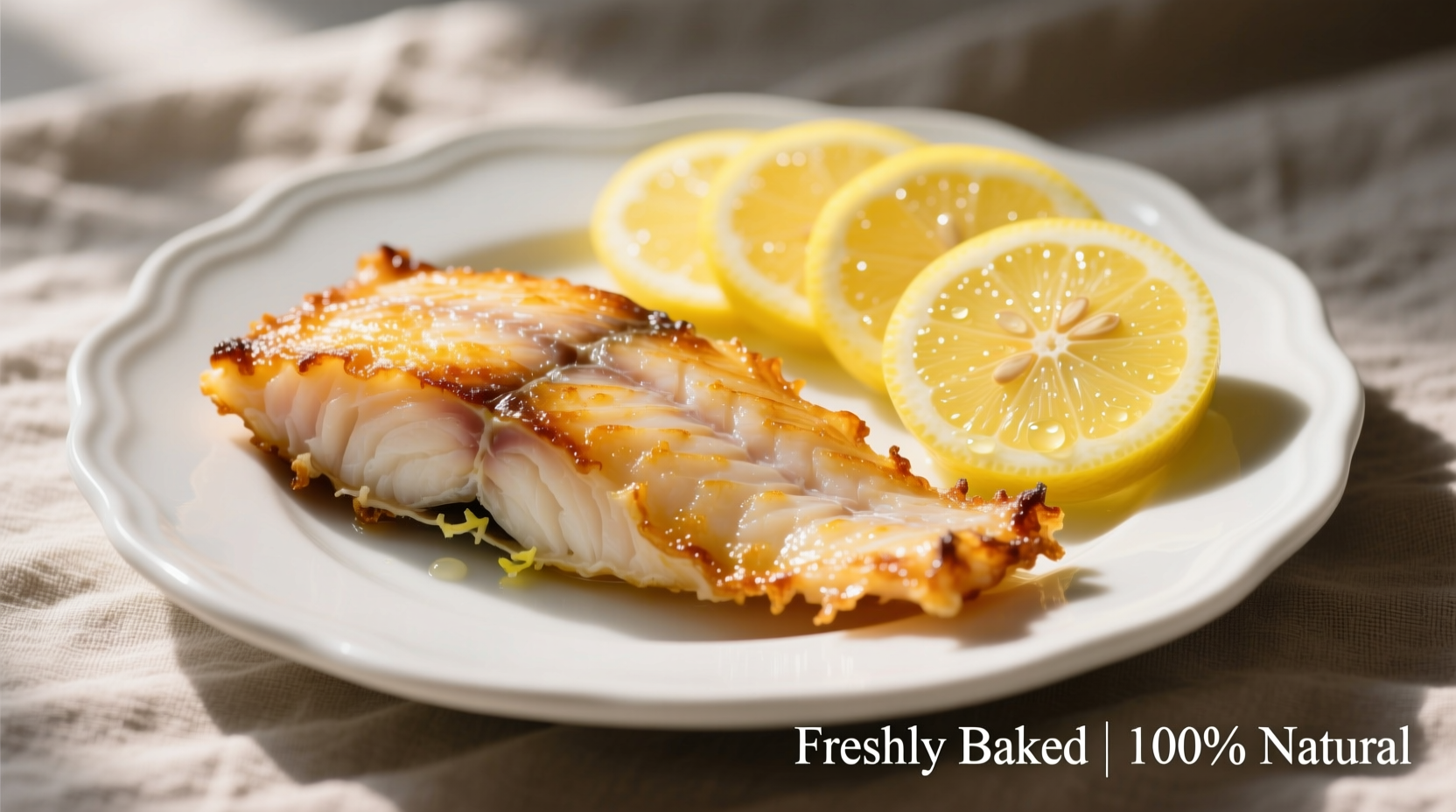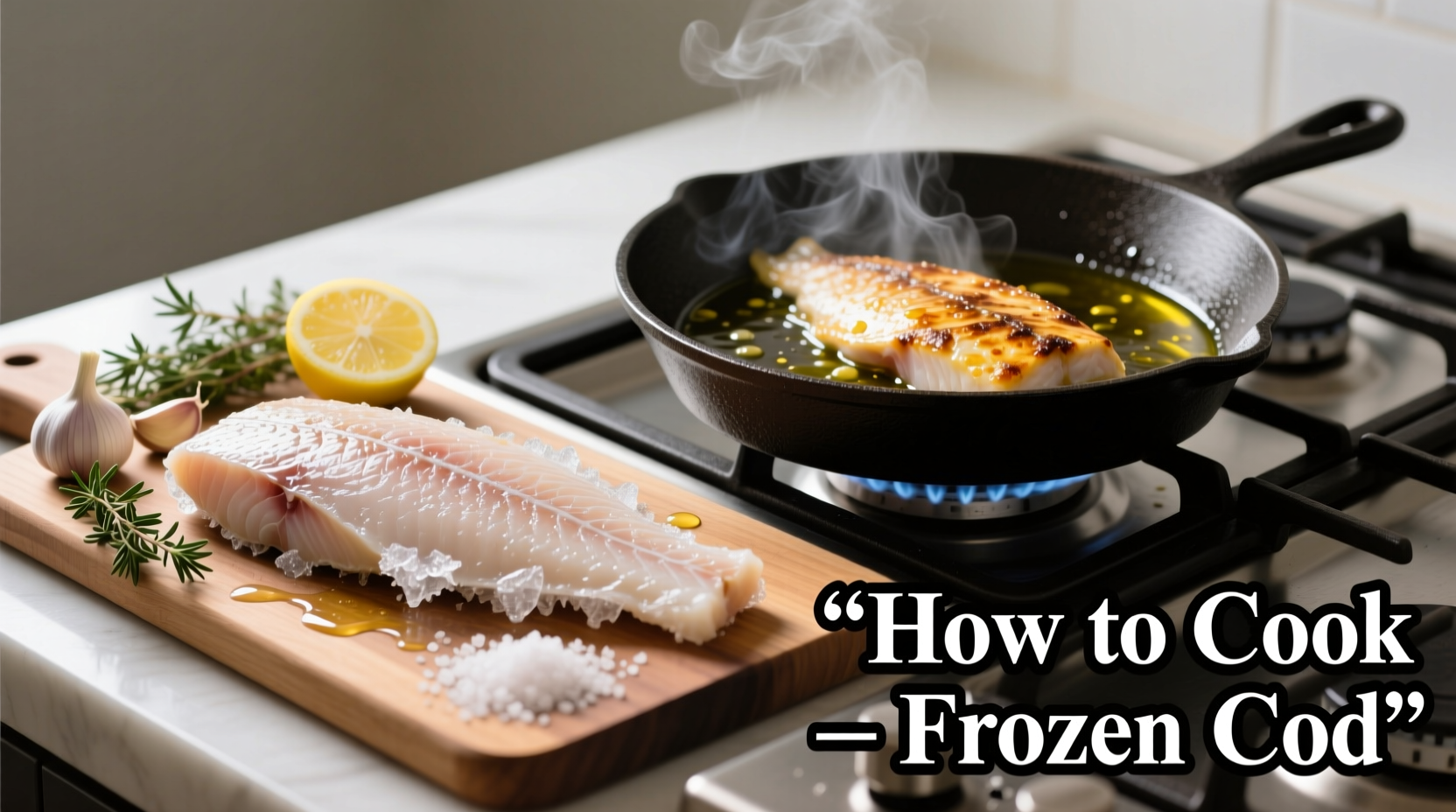If you've ever stared at a frozen cod fillet wondering whether to wait hours for thawing or risk a watery disaster, you're not alone. Professional chefs regularly cook frozen fish without compromising quality when using the right methods. This guide reveals exactly how to transform frozen cod into a restaurant-quality meal in under 30 minutes—no defrosting required.
Why Cooking Frozen Cod Works (When Done Right)
Cooking frozen cod successfully hinges on understanding moisture control. When cod thaws slowly in the refrigerator, ice crystals melt and pool around the fish, creating excess moisture that steams the fillet during cooking. Cooking from frozen locks in natural juices while the exterior forms a protective barrier. The USDA confirms frozen fish is safe to cook directly as long as internal temperature reaches 145°F (63°C), verified with a food thermometer.
Essential Preparation Checklist
Before you start cooking, gather these items to ensure success:
- Heavy-duty aluminum foil or parchment paper (for baking)
- Non-stick or cast-iron skillet (for pan-frying)
- Instant-read thermometer (critical for accuracy)
- Absorbent paper towels (to blot surface moisture)
- Neutral oil with high smoke point (avocado or canola)
Step-by-Step Cooking Methods
Baking Method (Most Foolproof)
Baking frozen cod requires slight timing adjustments but delivers consistent results:
- Preheat oven to 400°F (204°C) with rack in center position
- Place frozen fillets on foil-lined baking sheet, leaving 1 inch between pieces
- Blot visible ice crystals with paper towels
- Brush lightly with oil and season (avoid salt initially—it draws out moisture)
- Bake 20-25 minutes (vs. 15-18 for thawed) until internal temperature hits 145°F
- Rest 3 minutes before serving for optimal flakiness
Pan-Frying Technique (For Crisp Skin)
This method requires attention but creates beautiful searing:
- Heat 2 tbsp oil in skillet over medium-high until shimmering (not smoking)
- Pat frozen cod thoroughly dry with paper towels
- Season flesh side only with pepper and herbs (save salt for after cooking)
- Place fish skin-side down in hot oil (it will sizzle immediately)
- Cook 6-8 minutes until golden crust forms, then flip carefully
- Cook additional 4-6 minutes until opaque throughout
- Verify temperature reaches 145°F before removing from heat
| Method | Prep Time | Cook Time | Best For | Texture Result |
|---|---|---|---|---|
| Baking | 5 min | 20-25 min | Beginners, multiple servings | Moist, flaky throughout |
| Pan-Frying | 8 min | 10-14 min | Crispy skin lovers | Crisp exterior, tender interior |
| Air Frying | 5 min | 12-15 min | Quick weeknight meals | Firm, slightly drier |
Troubleshooting Common Issues
Soggy bottom? This happens when excess moisture pools during cooking. Solution: Elevate fillets on a wire rack when baking, or ensure your pan is properly preheated before adding fish.
Dry or rubbery texture? Overcooking is the culprit. Frozen cod needs 25% more time than thawed—not double. Use a thermometer rather than guessing by appearance.
Uneven cooking? Thicker fillets require strategic placement. Position thicker parts toward the oven's outer edges where heat circulates more intensely.
Flavor Enhancement Tips
Frozen fish benefits from bold flavors that compensate for any slight texture differences. Try these professional techniques:
- Add citrus zest during last 5 minutes of baking for brightness
- Create a compound butter with herbs to melt over cooked fillets
- Use vinegar-based sauces (lemon-caper, tomato-olive) that cut through potential blandness
- Finish with flaky sea salt after cooking to avoid moisture extraction

Storage and Leftover Guidance
Cooked frozen cod stores well for 3-4 days in airtight containers. When reheating, avoid microwaves which create rubbery texture. Instead:
- Oven method: 275°F for 10-12 minutes covered with foil
- Steam method: 3-4 minutes over simmering water with lemon slices
- Never reheat above 140°F to prevent overcooking
Frequently Asked Questions
Can I cook frozen cod in a microwave?
While possible, microwaving frozen cod typically yields rubbery, uneven results. The USDA recommends conventional cooking methods for best texture and food safety. If absolutely necessary, use 30-50% power setting in 2-minute intervals, checking temperature between sessions.
Does cooking frozen cod affect nutritional value?
No significant nutritional differences occur when properly cooking frozen versus thawed cod. A 6-ounce serving maintains approximately 30g protein, 1g fat, and rich omega-3 content regardless of starting state, according to USDA FoodData Central analysis.
Why does my frozen cod release so much liquid during cooking?
Excess liquid indicates ice crystals melting during cooking. Prevent this by thoroughly patting fillets dry before cooking and avoiding salt application until after cooking. The American Culinary Federation recommends using a wire rack when baking to allow moisture drainage (source: acfchefs.org/cooking-frozen-seafood).
How do I know when frozen cod is fully cooked?
Frozen cod is done when it reaches 145°F internally and flakes easily with a fork. Unlike thawed fish, frozen cod may appear slightly translucent in the center when properly cooked due to the rapid temperature change. Always verify with a thermometer—visual cues alone are unreliable for frozen fish.
Can I use the same cooking times for other frozen fish?
Thicker fish like salmon require longer cooking times (add 5-7 minutes), while thinner fish like sole need less (reduce by 3-5 minutes). The general rule is 4-5 minutes per 1/2 inch thickness when starting from frozen, verified by the FDA's "Safe Minimum Cooking Temperatures" guidelines.











 浙公网安备
33010002000092号
浙公网安备
33010002000092号 浙B2-20120091-4
浙B2-20120091-4